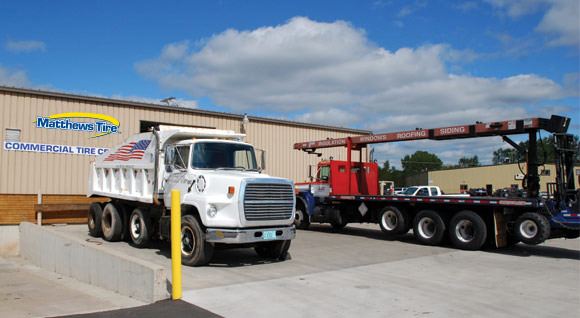Winter driving in Wisconsin comes with challenges. In addition to the unpredictable weather patterns, snow and ice … there’s the bitter cold. And it always seems to last longer than we think. “Warming up the car” is a big part of our Wisconsin culture. Aside from comfort, is there a real reason why it’s necessary to warm up your vehicle? Does it actually work to warm your engine? Is the act of starting the engine and letting it run in the driveway truly better for your vehicle long-term? “Not necessarily,” says Dave Flunker, manager of Matthews Tire Appleton West. “You should think of driving your car like taking a run.”
Dave explains, if you were going for a jog, you’d stretch a bit and warm up by walking. It’s the same for a car. “Sure, get it started for a minute to get the fluids moving, lubricating the parts, just a minute or so. By the time you do your pre-inspection or get your phone connected and your playlist pulled up, it should be ready to drive,” he said. “Then just drive gently to really warm up the engine.”
Just as you wouldn’t begin a jog in a dead sprint, you shouldn’t slam on the gas right out of the driveway. “If you’re an aggressive driver, you could do some harm,” Dave clarified. “If fluids haven’t reached all the pistons and you slam on the gas, it could do internal damage.” Although Dave admits, newer synthetic oil these days is better. “It’s almost water. It’s easier for engines to lubricate quickly and allows you to drive quickly in the cold.”
Which explains the roots of this driving myth to “warm up your car”. Dave explained “Back in the day, we had thicker oil and it took longer to heat up and move through the system. Some described it “like molasses,” he laughed.
Overall, even with newer synthetic oils, moderation is key. “Think of it as a run. You should pace yourself,” he advised. So, if a “warm up” your isn’t necessarily a sure-fire way to help your car run in the extreme cold, what is?
Here are Dave’s tips:
Fill your fluids - Make sure all your fluids, such as oil and power steering fluid, are full. If they are nearing empty, it takes longer to course through the vehicle.
Check battery – Most batteries have a six-year lifespan. If your battery is nearing the four-to-five-year mark, you may want to replace it sooner than later to avoid being stuck on the road in the bitter cold.
Keep fuel at half a tank – Sometimes moisture gets in the fuel lines. If there’s gas in there, it simply burns up with it and doesn’t cause a problem. If it’s cold, your tank is empty and moisture gets in there, the gas line can freeze.
Use a frost plug –It’s an electrical plug-in that helps keep the engine warm. It’s usually used on diesel trucks because they have thicker oil and can be harder to start. They are less common now, but some people do still use them.
Consider your parking – “As an old farmer, I always say, ‘Park with your tail to the wind’. I don’t know how much truth there is to that, but it seems logical,” he said. That way, your trunk—not your engine—bears the brunt of the wind and frost.
How is your car running this winter? Do you need help with any of Dave’s tips above? Rely on the ASE-certified technicians at Matthews Tire for friendly and expert service.















